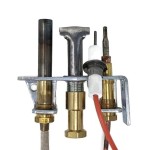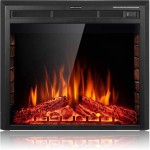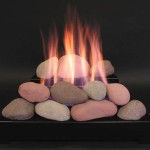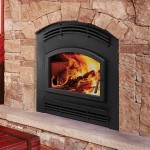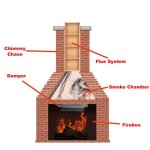Understanding and Utilizing a Fireplace Draft Stopper
A fireplace, traditionally a symbol of warmth and comfort, can ironically become a significant source of energy loss in a home when not in use. The chimney, designed to vent smoke and gases, also provides a direct pathway for drafts to enter the living space. These drafts can significantly lower the overall temperature of a room, forcing heating systems to work harder and increasing energy consumption.
A fireplace draft stopper is a device designed to mitigate this energy loss by creating a barrier within the chimney, effectively blocking the flow of air. These stoppers come in various forms and materials, each with its own advantages and disadvantages. Selecting the appropriate draft stopper depends on factors such as fireplace size, chimney construction, and individual budget considerations.
The primary function of a fireplace draft stopper is to prevent cold air from entering the home through the chimney flue. This is particularly important during the colder months when the difference in temperature between the inside and outside of the house is greatest. Without a draft stopper, the chimney acts as a significant source of heat loss, negating the efficiency of heating systems and increasing energy bills.
Beyond preventing cold drafts, a fireplace draft stopper also helps to keep out unwanted pests and debris. Animals such as birds, squirrels, and insects can often gain access to the house through the chimney. A draft stopper creates a physical barrier that prevents these creatures from entering, reducing the risk of damage or unsanitary conditions. Similarly, debris such as leaves, twigs, and rainwater can accumulate inside the chimney, potentially causing blockages and other issues. A draft stopper helps to keep the chimney clean and free of obstructions.
Furthermore, draft stoppers can also assist in preventing downdrafts. Downdrafts occur when wind currents force air down the chimney flue, causing smoke and unpleasant odors to enter the house. A properly installed draft stopper can disrupt these downdrafts, improving indoor air quality and creating a more comfortable living environment.
Key Types of Fireplace Draft Stoppers
Several types of fireplace draft stoppers are available on the market, each designed with specific features and benefits. The most common types include chimney balloons, chimney caps, and fireplace plugs. Understanding the characteristics of each type is crucial for selecting the most appropriate option for a particular fireplace.
Chimney balloons, also known as chimney pillows, are inflatable devices that create a tight seal within the chimney flue. These balloons are typically made of durable plastic or rubber and are inflated using a hand pump. The key advantage of a chimney balloon is its ability to conform to the irregular shape of the chimney flue, creating a custom fit that effectively blocks drafts. Chimney balloons are relatively easy to install and remove, making them a convenient option for seasonal use.
Chimney caps are protective covers that are installed at the top of the chimney. These caps typically consist of a wire mesh screen that prevents animals and debris from entering the chimney, while also allowing smoke and gases to escape. Chimney caps can also help to prevent rainwater from entering the chimney, reducing the risk of water damage. While chimney caps primarily serve a protective function, they also contribute to reducing drafts by minimizing the amount of air that can flow freely through the chimney flue.
Fireplace plugs are typically made of rigid foam or fiberglass insulation and are designed to fit snugly into the throat of the fireplace. These plugs provide a solid barrier that effectively blocks drafts and prevents heat loss. Fireplace plugs are generally more durable than chimney balloons and offer a more permanent solution for draft control. However, they may be more difficult to install and remove, particularly in fireplaces with irregular dimensions.
Factors to Consider When Choosing a Fireplace Draft Stopper
Selecting the right fireplace draft stopper requires careful consideration of several factors, including fireplace size, chimney construction, the level of draft protection required, and budget constraints. Failing to account for these factors can result in inefficient draft control and potential safety hazards.
The size of the fireplace opening and the dimensions of the chimney flue are crucial considerations. The draft stopper must be appropriately sized to fit snugly within the chimney, creating an effective seal. Measuring the fireplace opening and the chimney flue is essential before purchasing a draft stopper. Some draft stoppers are available in various sizes, while others can be custom-made to fit specific dimensions.
The construction of the chimney can also influence the choice of draft stopper. Chimneys may be made of brick, stone, or metal, and each material has different properties that can affect the performance of the draft stopper. For example, brick chimneys may have uneven surfaces that require a flexible draft stopper such as a chimney balloon. Metal chimneys, on the other hand, may be better suited for fireplace plugs or chimney caps.
The level of draft protection required depends on the severity of the drafts and the desired level of energy savings. In some cases, a simple fireplace plug may be sufficient to block minor drafts. However, in situations where drafts are more severe, a more robust solution such as a chimney balloon or a combination of a chimney cap and a fireplace plug may be necessary.
Finally, budget considerations can also play a role in the selection process. Chimney balloons are generally the least expensive option, while custom-made draft stoppers and professionally installed chimney caps may be more costly. It is important to weigh the cost of the draft stopper against the potential energy savings and other benefits to determine the most cost-effective solution.
Installation and Maintenance of Fireplace Draft Stoppers
Proper installation and maintenance are essential for ensuring the effectiveness and longevity of a fireplace draft stopper. Incorrect installation can compromise the seal and reduce the draft protection, while neglecting maintenance can lead to damage and reduced performance. The specific installation and maintenance requirements vary depending on the type of draft stopper.
Chimney balloons are relatively easy to install. The balloon is simply inserted into the chimney flue and inflated using a hand pump until it creates a tight seal. It is important to avoid over-inflating the balloon, as this can damage the material. Before inflating the balloon, ensure that the fireplace damper is open to allow for proper airflow. When removing the chimney balloon, deflate it completely before pulling it out of the chimney flue. Store the balloon in a dry place when not in use to prevent damage.
Chimney caps typically require professional installation. The cap is attached to the top of the chimney using screws or other fasteners. It is important to ensure that the cap is securely attached to prevent it from being blown off by wind. Regular inspections are necessary to check for damage to the wire mesh screen or other components. Clean the chimney cap periodically to remove debris such as leaves and twigs that can accumulate on the screen.
Fireplace plugs are inserted into the throat of the fireplace, creating a tight seal. The plug should be sized appropriately to fit snugly within the fireplace opening. Some fireplace plugs have adjustable features that allow for a custom fit. When removing the fireplace plug, pull it out carefully to avoid damaging the fireplace or the plug. Store the plug in a dry place when not in use.
Regardless of the type of draft stopper used, it is important to remember to remove it before lighting a fire in the fireplace. Failing to do so can create a dangerous situation, as the draft stopper can block the escape of smoke and gases, leading to carbon monoxide poisoning. Place a prominent reminder near the fireplace to serve as a visual cue to remove the draft stopper before lighting a fire.
Regularly inspecting the draft stopper for any signs of damage or wear is crucial. Tears, cracks, or other damage can compromise the effectiveness of the seal and reduce the draft protection. Replace damaged draft stoppers promptly to maintain optimal performance. By following these installation and maintenance guidelines, homeowners can ensure that their fireplace draft stopper provides years of reliable service.

Diy Draft Stopper For Your Fireplace Genius Bob Vila

Achla Designs 40 In L Black 3 Panel Steel Draft Guard Cover Dgc 01 The Home Depot

Custom Magnetic Fireplace Draft Stopper For Chimney

Custom Magnetic Fireplace Draft Stopper Eliminator Barbecuepitstop

Fireplace Draft Stoppers Excluders A Complete Guide Universe

Chimney Balloon Inflatable Fireplace Draft Stopper Pillow Blocker Small 9 X 15 Com

Fireplace Cover Black Windshield Draft Temu

Fireplace Plug 16 In X 38 Rectangular Brk Fp 05 01 The Home Depot

Hapeisy 2 Pcs Magnetic Fireplace Draft Stopper Cover To Block Cold Air From Vent Prevent Heat Loss Magnet Screen Indoor Chimney Blocker Covers Com

Fireplace Coverfireplace Draft Stopper Black Blanket For Heat Loss
Related Posts

